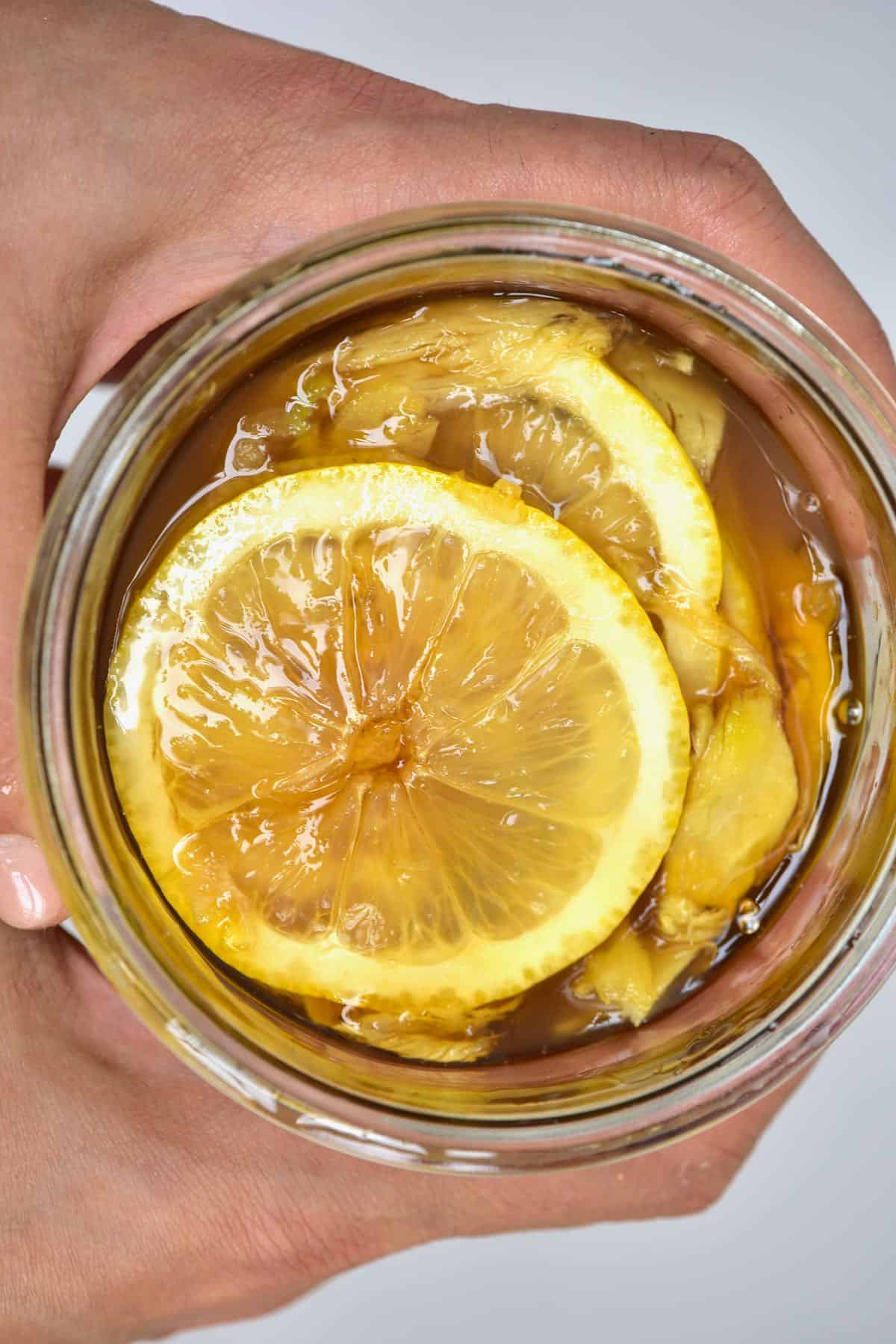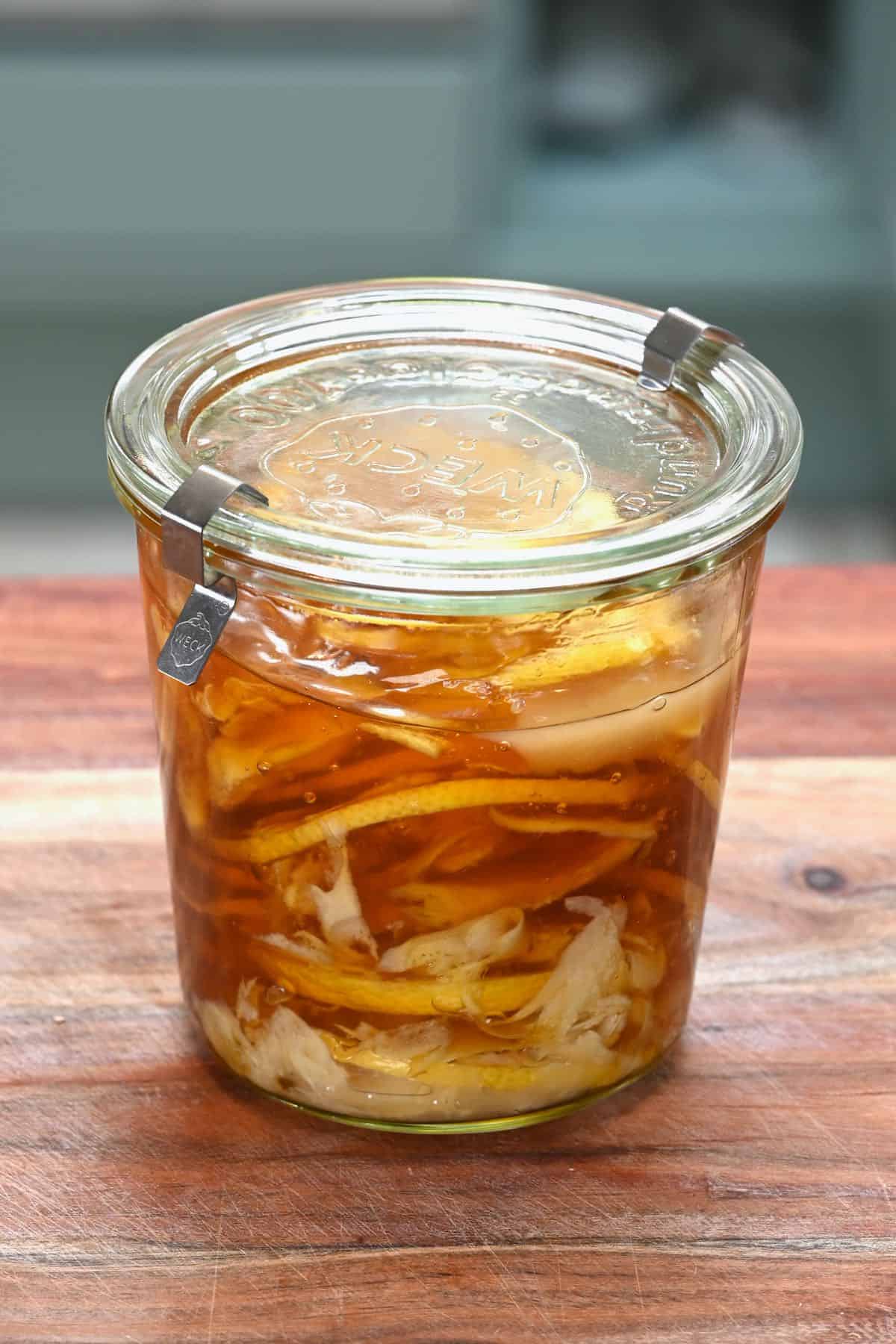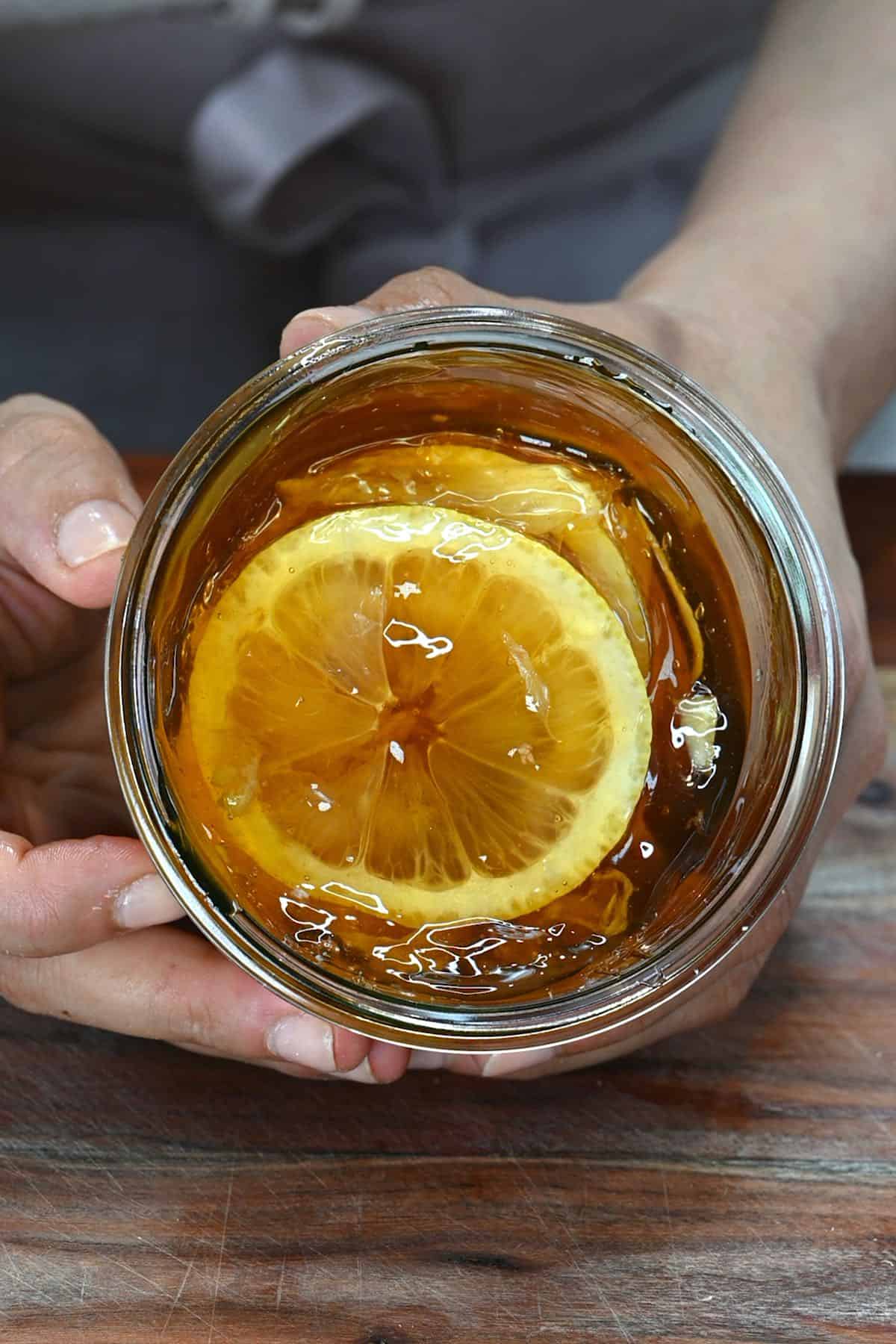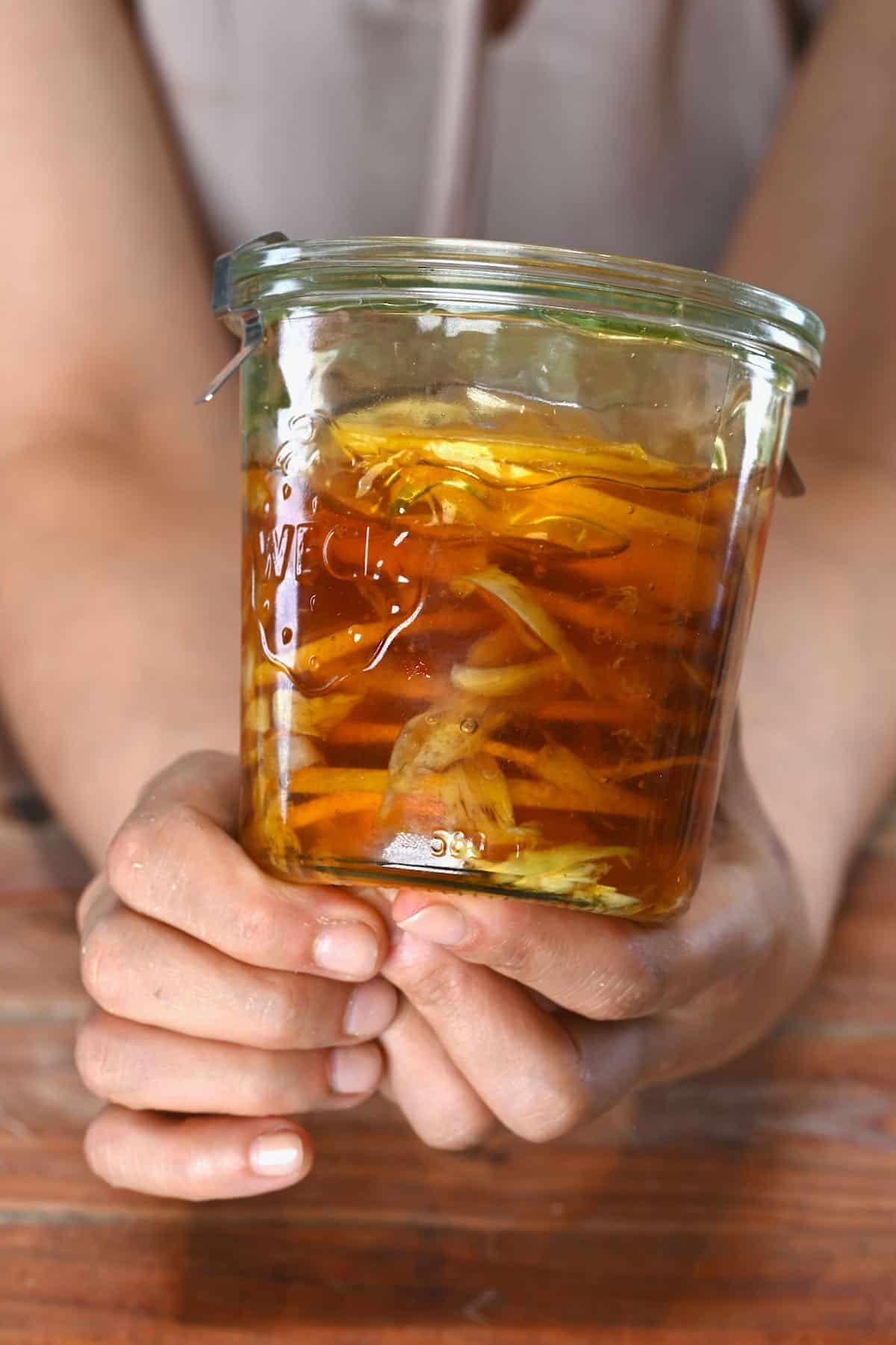The combination of honey, lemon, and ginger is a favorite of mine for its immune-boosting properties, like in these lemon, ginger, honey, and cayenne immunity shots. It tastes great and makes a fantastic cold and flu tonic. Plus, raw honey’s pollen may help with allergies, and fermentation enhances these benefits, offering a long shelf life. Lemon is equally brilliant for your immune system and is packed with antioxidants and Vitamin C. It’s also a natural detoxifier and has antibacterial and antiviral properties. So, as you can imagine, the combination of lemon, ginger, and honey is a goldmine of health benefits! Once fermentation begins, your ingredients are preserved, and you end up with a delicious fermented honey lemon ginger. Simple!
How to use honey fermented ginger and lemon
While I’ve already mentioned that this concoction is perfect for when you’re feeling under the weather, there are countless other ways to enjoy honey-fermented lemon and ginger. First, sterilize the jar you plan to use for the fermented honey recipe. To do so, wash the jar and lid in hot, soapy water, rinsing well. Then, place the jars (no rubber or plastic parts) in a preheated oven for ten minutes at 325ºF/160ºC to dry completely. Some dishwashers also come with a “sterilize” setting and you can use that. Wash the lemon and peel the ginger. Then, thinly slice the lemon and ginger with a sharp knife or mandoline (even better for even slices). I used a peeler for the ginger, but thicker knife/mandoline slices will work, too. Layer the jar by placing some ginger at the bottom, then add a couple of lemon slices. Repeat this process until you’ve used all the ingredients. Pour the honey over the ginger and lemon, making sure it fully submerges the ingredients. Use a clean spoon or skewer to gently move the ingredients around, ensuring the honey reaches the bottom of the jar. Alternatively, drizzle 2-3 tablespoons of honey at the bottom of the jar and between each layer. This makes it easier to fully coat the ingredients. Finally, seal the jar. Leave the ginger honey lemon mixture to ferment for two weeks. During this time, “burp” the jar daily by opening the lid for just a second to release any built-up gases. It’s a good idea to shake the jar slightly or flip it upside down (with a plate or bowl beneath). Shaking or flipping is preferred over stirring (with a wooden spoon) to avoid introducing too much oxygen, which can affect fermentation. After two weeks, you can start enjoying the honey fermented ginger and lemon. However, it tastes even better after a month! Like most fermented foods, just keep an eye out for bad smells, mold, and other signs of spoilage. This doesn’t happen often, but if it does, it’s time to start a new ferment.
Ginger Tea: Add around one tablespoon of the honey, ginger, and lemon mixture, plus a slice or two of lemon, to a mug or teacup and top it up with hot water. For a sweeter or more flavorful drink, simply add a bit more of the mixture. Hot Toddy: Start with your ginger tea made from the honey-fermented lemon and ginger mixture. To turn it into an adult treat, add a splash of whiskey and a cinnamon stick (or a dash of cinnamon). This way, you enhance your healthful ginger tea with a delightful twist. You can also add this fermented honey to smoothie recipes, salad dressings, and marinades. For sweeter treats, I love drizzling this over a breakfast bowl with natural dairy yogurt, dairy-free coconut yogurt, or dairy-free almond yogurt. You can also drizzle it over oatmeal porridge, protein pancakes, waffles, scones, and more.
Let me know in the comments how you enjoy using this honey fermented ginger and lemon!
More fermentation recipes
How to Make Fermented Garlic Honey Tepache De Piña Homemade Kombucha DIY: Plain & Pomegranate Kombucha How To Make Apple Cider Vinegar How to Make Tempeh Easy Homemade Sauerkraut (Just 2 Ingredients) Napa Cabbage Kimchi (Korean Baechu-Kimchi) How to Make Miso Paste (Kome Miso/Shinshu Miso)
If you try this honey fermented ginger and lemon recipe, let me know how it goes in the comments below. I’d appreciate a recipe card rating and would love to see your recipe recreations – tag me on Instagram @Alphafoodie!







